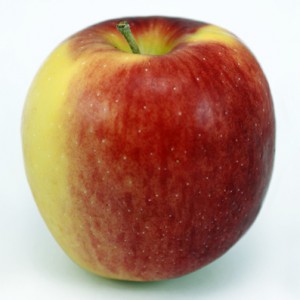A funny thing happened yesterday on my way to the refrigerator. I was working from home. It was mid-afternoon and time for my snack.
I rose from my desk, went downstairs and walked my appetite into the kitchen, but stopped short of opening the fridge door. I paused, wondering what to eat. With the Christmas eating marathon still fresh on my mind, and around my waist, I was looking for a healthy snack, likely a piece of fruit, but which one?
My choice of available fruit came down to an apple, an orange and a banana. I considered my options.
- Apples: Are high in pectin, a fibre which has a long list of health benefits, the flavonoids reduce diabetes risk, and they taste refreshing.
- Oranges: The antioxidants offer protection from all sorts of disease, the vitamin C supports the immune system, and they taste great.
- Bananas: The potassium lowers stroke risk, the vitamin B6 keeps the nervous system in top shape, and they are more filling than the other two.
Hmmm… They’re all good, I thought, but in different ways. While as fruit they have their similarities, they are each designed to meet different objectives. How do I compare them? How do I choose?
 Naturally, as you might expect, my first big decision of 2011 reminded me of the problem marketers face when trying to decide which of a group of marketing programs was most effective. Deciding which piece of fruit or marketing program was most effective depends heavily on my objectives related to eating, or on the marketer’s objectives related to each program.
Naturally, as you might expect, my first big decision of 2011 reminded me of the problem marketers face when trying to decide which of a group of marketing programs was most effective. Deciding which piece of fruit or marketing program was most effective depends heavily on my objectives related to eating, or on the marketer’s objectives related to each program.
One of the challenges in comparing Marketing Program (or fruit) A to B to C is that they each have different objectives. That means, the right metrics to measure each program might be quite different from the metrics to measure the other programs. This fact makes comparison very difficult. As they say; it’s like comparing apples to oranges.
To make this comparison easier, you need to focus on comparing how effective each marketing program is at doing whatever it is supposed to do. Let’s start with the last six words of that sentence.
Step 1: Decide which metrics to use. Answer two simple questions about each program:
- Who are you targeting?
- What do you want them to do?
For example, consider the different metrics you might use to measure:
- A public relations campaign to raise awareness among non-customers
- An email program to incent loyalty and improve customer retention
- An online contest to add email addresses to your customer database and incent referrals to non-customers
Step 2: Level the playing field. This is the part where you compare the relative effectiveness of programs measured with different metrics:
- Create a standard scorecard for your business. This becomes your template. Your scorecard needs to have the flexibility to measure all types of marketing programs, and accommodate all types of metrics. For a simple program you might need 5 to 10 metrics, whereas for a complex one you might need 30 to 40.
- Customize your template to create a scorecard for each program. Some metrics will appear on each program’s scorecard, while others will vary from one scorecard to the next, given that the programs each had different objectives.
- Score each metric according to how it performed vs. its objective. (actual/objective X 100%) This is the pivotal step that converts all metrics into one common metric, in this case a percentage. Working with a common metric enables scoring each one and totaling your scores for each scorecard.
That last step is critical to enabling you to compare programs with differing metrics. Instead of figuratively looking at apples, oranges and bananas and trying to figure out which is better, now you’re just looking at fruit, with a simple comparable rating for each. Then rank them, and you’ll know which programs were best and worst at meeting their objectives and delivering the results you wanted.
To solve my little dilemma yesterday, I suppose I could have created a Fruit Measurement Scorecard, based on my specific eating objectives at that moment, to give me a way to rate and rank three different pieces of fruit, but that would have been a bit weird. OK, a lot weird. Anway, I was hungry, there just wasn’t time.
Oh, if you’re wondering which fruit I chose, without a scorecard to assist me, I caved and ate the last piece of blueberry pie. Hey, those blueberries are loaded with antioxidants!

Speak Your Mind